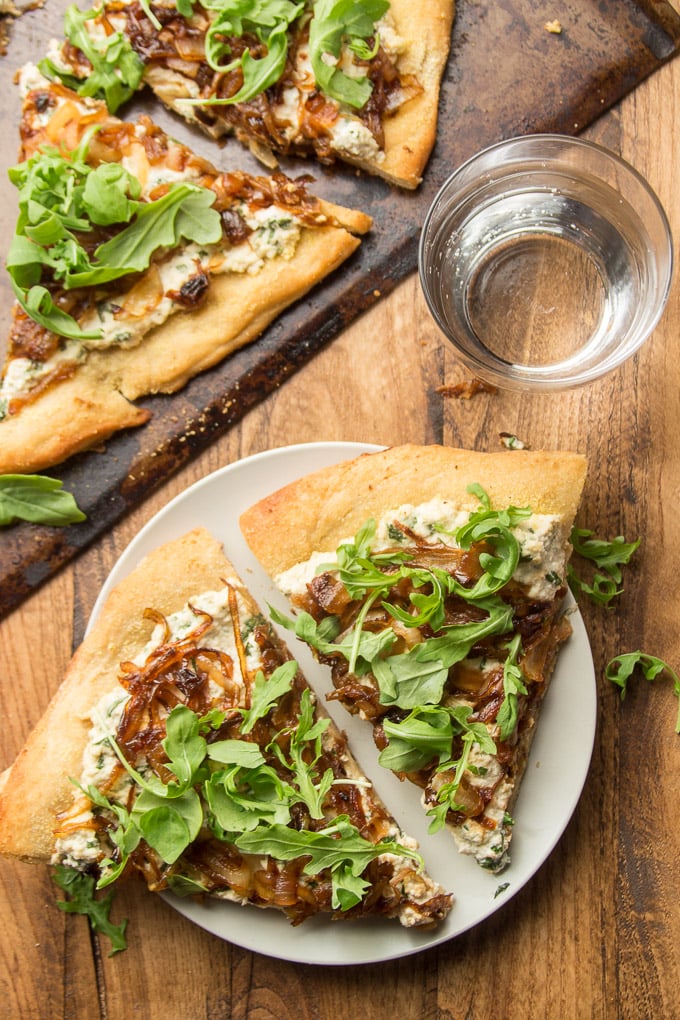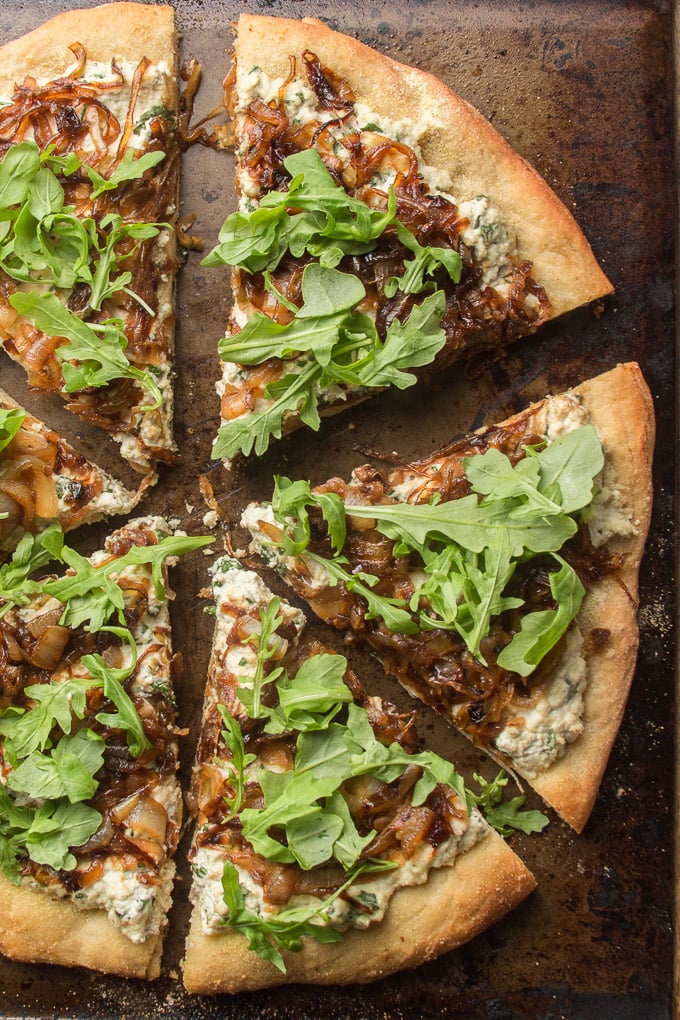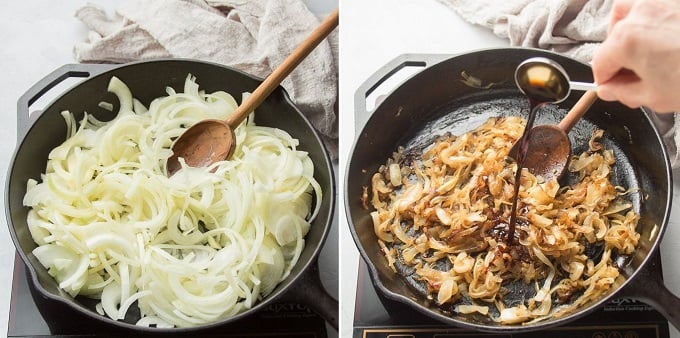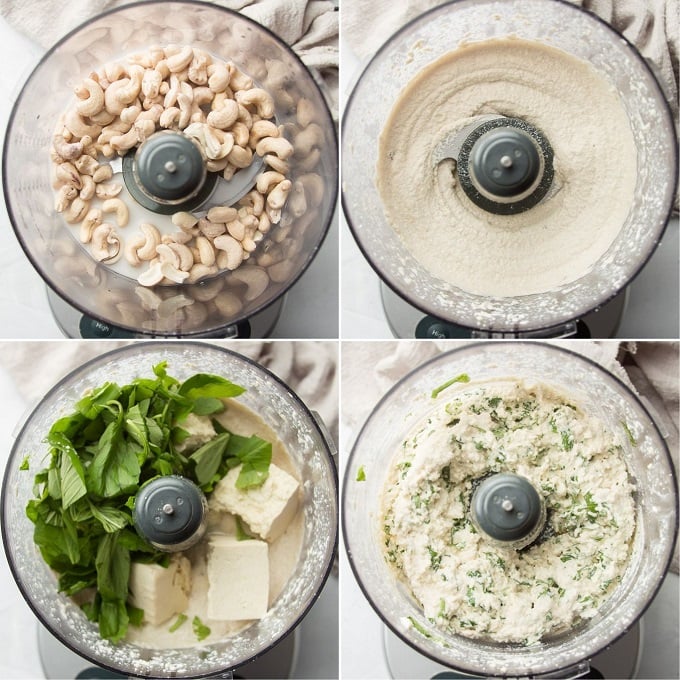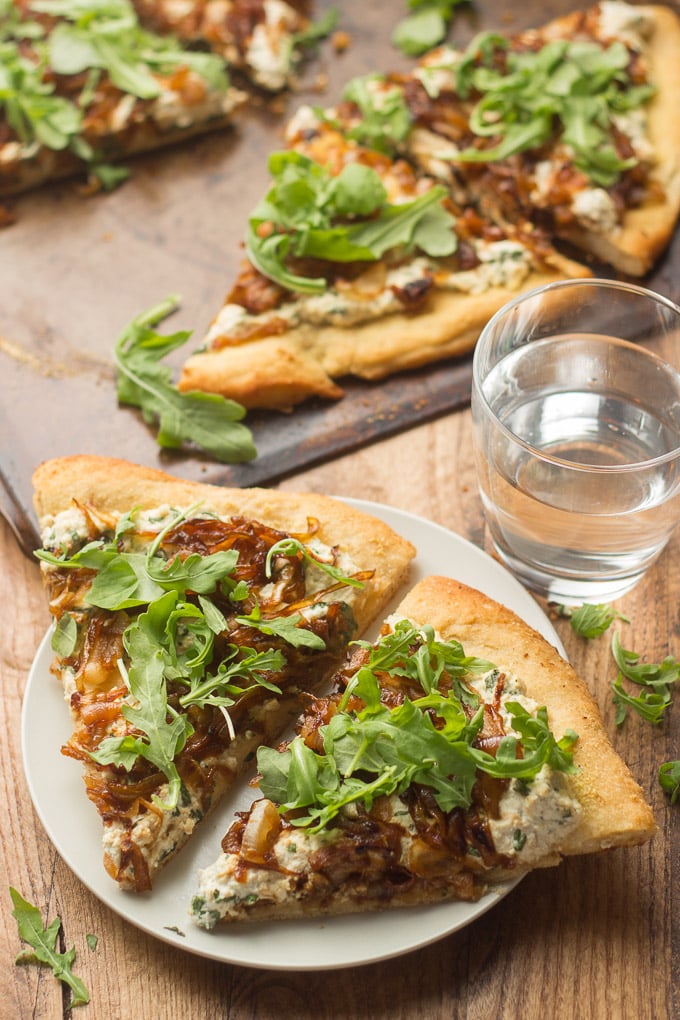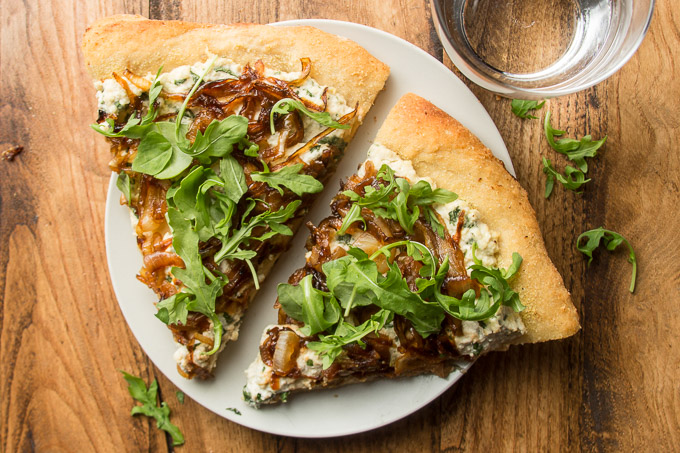Caramelized onions are one of my top cravings during the fall and winter months. They’re sweet and savory at the same time, so delicious, and when I cook them my house smells wonderful for days. I’d been wanting to create a vegan fall-themed pizza and I was also feeling my normal fall hankering for some caramelized onions. Why not tick both things off the list together? I did!
How to Caramelize Onions
Caramelizing onions is actually super easy, and relatively hands-off. It can take a while, but for most of the cook time all you need to do is give the onions a stir every now and then. Start by slicing your onions. The thinner you slice them, the quicker they’ll caramelize. I like to go with about an ⅛-inch thick slice. Place your onions in a large skillet or pot with some olive oil and a pinch of salt. We’re using yellow onions here (because that’s what I always have on hand), so I like to add a bit of brown sugar for sweetness. You can skip this if you prefer, or use a sweeter variety of onion like Vidalia. Stir everything together and place the skillet over low heat. You can go with medium-low heat if you want your onions to cook a bit quicker, but don’t go higher than that — to truly caramelize onions they need to cook slowly! The onions should take between an hour and an hour and a half to fully caramelize. Stir them every so often and keep an eye on the heat level — if they start to brown too quickly, cook unevenly, or get crispy, you’ve probably got the heat too high. Once the onions have caramelized you can season them with some salt, and any other seasonions you’d like to use. For this recipe I’ve used a bit of balsamic vinegar to add some tartness. Add it to the onions, give them a stir and turn up the heat slightly for just about a minute to cook off the excess liquid.
How to Make Dairy-Free Ricotta
Start with some raw cashews that have been soaked overnight in water. Soaking the cashews softens them up so they’re easy to blend. Rinse the cashews and then add them to a food processor bowl along with a bit of non-dairy milk. Blend everything to a smooth paste. Next, add some lemon juice for tartness, tofu for texture, salt, and fresh basil. This time you just want to pulse the food processor. Keep the mixture chunky, so that it resembles ricotta cheese.
Assemble the Pizza
I used my homemade whole wheat pizza dough to make the crust, but you can use store-bought dough if you prefer. Either way, roll it out to a large circle and brush it with some olive oil. We’re going to prebake the crust for about 10 minutes at 450°F. Once it looks lightly browned and puffy (not quite fully cooked), pop it out of the oven and slather it with the ricotta, then distribute the onions on top. Bake it for about 5 minutes more, just to heat up the toppings. Arrange some fresh baby arugula over your pizza, slice it up, and devour!
Make ahead options: the caramelized onions and vegan ricotta can both be made in advance. Store them in sealed containers in the fridge for up to 2 days, or in the freezer for up to 3 months. Can this recipe be made gluten-free? Yup! Just use your favorite gluten-free pizza crust. Use a good quality balsamic vinegar. It should be thick and dark with a bit of sweetness to it. Lower quality balsamic vinegars will be very sour and your onions will likely taste too tart. Is there a substitute for the cashews? Try doubling the tofu. This will give you a lighter ricotta. Is there a substitute for the tofu? You could double the cashews, but this will give you a very rich ricotta. Other options: steamed cauliflower or white beans might work, but I haven’t tested either option.
Like this recipe? If so, be sure to follow me on Facebook, Pinterest or Instagram, or subscribe to my newsletter. And please stop back and leave me a review and rating below if you make it!
